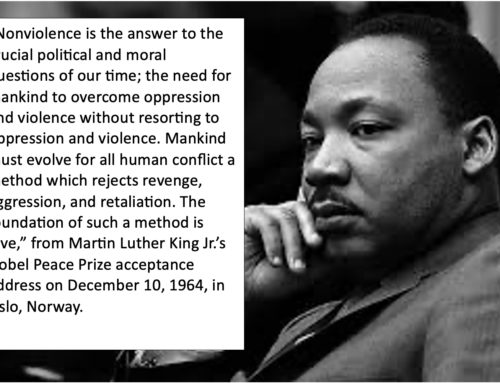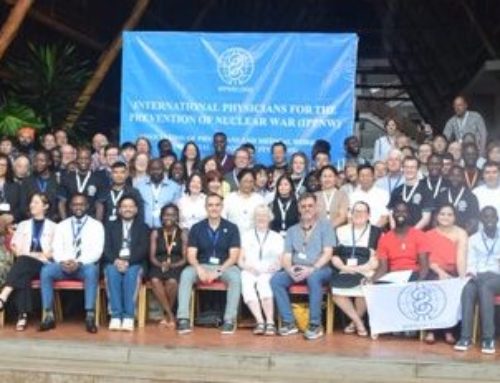Strong Support for Updated Natural Gas Infrastructure Prohibition Ordinance in San Jose, CA (as outlined in FILE: 20-1445 for consideration on November 17, 2020)
Dear Mayor Liccardo and Council Members,
On behalf of the Campaign for Fossil Free Buildings in Silicon Valley (FFBSV), this letter expresses our strong support for the proposed Updated Natural Gas Infrastructure Prohibition Ordinance, – as proposed by staff without further amendments –extending the gas prohibition adopted last year for new homes, ADUs, small apartments, and municipal buildings to other sectors. Although we are in unprecedented times with a pandemic and economic downturn, city building electrification regulations are critically needed to address the magnitude of the climate, air quality, health, and safety impacts of current fossil gas use in our homes and buildings.
FFBSV includes the 33 organizations listed above, working together to support an accelerated phase out of fossil fuels in buildings. A rapid transition away from fossil fuel use is critical to avoid the very worst and irreversible impacts of climate change. Preventing the use of fossil fuels, including natural gas, in new construction will create more affordable, cleaner, healthier, and more resilient housing and buildings for communities throughout San Jose.
The resilience of all-electric new construction is paramount as we face longer and more destructive wildfire seasons and increasing Public Safety Power Shutdowns. Not only are new gas appliances inoperable during grid outages (for instance, pilot lights are now prohibited for new appliances by the state for safety reasons), gas service also takes far longer to restore than electricity after an emergency outage. Further, as far as any concerns about grid reliability, the memo from city staff on this item correctly notes that grid impacts from the electrification of new construction will be marginal.
It has come to our attention that Bloom Energy has requested an exemption from the proposed Gas Prohibition. Bloom products are fuel cell based electricity generators that use natural gas as the fuel source. They require gas infrastructure connections and continuous operation (with the associated CO2 and methane emissions) just like conventional gas combustion devices. The Staff supplemental memorandum indicates that the purpose of the exemption is “in the event of an electric grid outage,” but fuel cells are not economic to run only during a power outage and therefore run 24/7/365. It also states that “Natural Gas-fed fuel cell systems typically have a higher carbon pounds of CO2 per megawatt-hour generated footprint than the same amount of natural gas-generated electricity provided by PG&E.” We are therefore strongly opposed to any exemptions allowing significant continuous fossil gas use in place of cleaner SJCE (or PG&E) electricity in new construction. Any blanket exemption in this vein would severely undermine the intent of the proposed gas prohibition. The late attempt of a fossil fuel company to tamper with this policy is inappropriate.
Building Electrification is an Urgent Climate Action
This year we have experienced another devastating wildfire season, and yet the depth of the climate crisis is even worse than commonly understood, demanding urgent action. In 2018, the Intergovernmental Panel on Climate Change (IPCC) concluded that we must dramatically reduce Greenhouse Gas (GHG) emissions by 2030 through rapid, far-reaching, and unprecedented measures.I Since that report was issued, we have seen greater impacts from climate change than anticipated.ii Current trends for carbon emissions and lack of action show that we are headed to twice the rate of warming that the Paris Climate Accord sought to contain.
San Jose joins at least 20 other cities that have adopted all-electric requirements for new construction that avoid new fossil gas use because there are many benefits to community health, safety, and a stable climate future, including:
- Economic: All-electric homes are less expensive to build (saving roughly $3,000 or more for each new apartment unit, for example). In all of the buildings analyzed by the 2019 Nonresidential New Construction Reach Code Cost Effectiveness Study, all-electric versions cost less to construct than their mixed-fuel counterparts. All-Electric buildings are also more efficient. For example, according to the California Energy Commission, a modern high efficiency heat pump electric water heater (available now at major retailers) costs roughly one third less on utility bills to operate than the most efficient gas water heater.iii In addition, all-electric buildings include air conditioning combined with heating, resulting in less equipment, reduced maintenance costs and greater climate resilience.
- Public Safety: Fossil gas is highly flammable. In the past ten years, 9,000 gas explosions in the U.S. have killed over 500 people, and gas leaks have displaced and sickened thousands of people.iv Fossil Gas also caused half the fires after two major California earthquakes.v
- Public Health: Gas stoves release smog-forming compounds such as nitrogen dioxide, unburnt hydrocarbons and carbon monoxide pollution that doubles risks for heart and lung disease and triples the use of asthma medications.vi In fact, studies have shown that children living in homes using gas for cooking have a more than 40% higher risk of having asthma.vii Further, improperly vented gas appliances lead to carbon monoxide poisoning that results in thousands of emergency room visits and several hundred deaths every year.viii
- Climate: All-electric buildings are a highly visible and practical step forward to address the climate crisis, by breaking the cycle of fossil fuel dependency in buildings. The proposed measure would reduce over 600,000 tons of CO2 emissions over the estimated 50-year lifecycle of the new buildings covered by this update, which will help San José reach its Climate Smart electrification and zero net energy building goals.
- Construction Time Savings: All-electric buildings are generally faster to design, permit, and build. The code is easier for building and planning staff to apply, and it is also easier for everyone to understand.
- Resilience: All-electric code today prevents a complex, costly and likely inevitable switch to electricity in the future, since gas prices are expected to rise sharply, and California is planning to eventually end gas distribution. PG&E has asked for a 24% gas rate increase and SoCalGas, a 42% increase, over the next couple years, and this is just the beginning. Building all-electric now will help future-proof San Jose.
The recent national election was the first to feature the climate crisis as a pivotal issue, making coordinated federal action on climate a new possibility.ix However, achieving meaningful progress will not be easy or timely. Local climate action will continue to be key to community resilience and laying a strong foundation for broader action. Please continue San Jose’s legacy of climate leadership with this updated prohibition on gas infrastructure for new construction. We urge you to adopt the policy as staff carefully crafted it, without any further exemptions. Thank you for considering our comments.
Sincerely,
Jeralyn Moran, Co-Chair, Unitarian Universalist Church of Palo Alto, Green Sanctuary
Sven Thesen, Founder, Project Green Home
Leane Eberhart, Architect
Raymond Larios, Advocate
Terry Nagel, Chair, Sustainable San Mateo County, and former Mayor, Burlingame
Lauren Weston, Executive Director, Acterra
Ellyn Dooley, Citizens’ Climate Lobby San Mateo County
Nicole Kemeny, 350 Silicon Valley
Hoi Poon, co-founder, SVYCA; co-chair, environment committee, SVDC, D1 resident
Abhimanyu Jayaraman, co-lead, state advocacy, Silicon Valley Youth Climate Action, HS student D1
Gladwyn d’Souza, co-Chair, Conservation Committee, Loma Prieta Chapter Sierra Club
Gary Latshaw, Chair of the Guadalupe Regional Group of the Loma Prieta Chapter of the Sierra Club
Suzanne Emerson, San Carlos Green
Constance Miller, GreenTown Los Altos
Diane Sweet, emeraldECO
Carol Cross, Fossil Free Mid-Peninsula
Suds Jain, 350 Silicon Valley City Teams co-leader, Acterra board member
Ruth Merino, Chair, San Jose Community Energy Advocates
Bruce Hodge, Carbon Free Palo Alto
Monica Mallon, SV Youth Climate Action, San Jose team
Avi Subramanian, SVYCA, San Jose Team
Eva Markiewicz, Rewiring America Advocate
Spencer Ahrens, Facebook
Susan Butler-Graham, Mothers Out Front Silicon Valley
Karen Warner Nelson, Chair Climate Reality Project: Santa Clara County
Peter Pham, SV Youth Climate Action, San Jose resident
Bruce Karney, Board Member of Carbon Free Silicon Valley
Esther Duong, Co-lead, San Jose Youth Climate Action Team of SVYCA
Daniel Tahara, San Francisco Climate Emergency Coalition
Robert M. Gould, MD, President, San Francisco Bay Physicians for Social Responsibility
Lauren Weston, Executive Director, Acterra: Action for a Healthy Planet
Diana Moss, Teacher, Advisor The Harker School Green Team
Natasha Yen, Co-President, The Harker School Green Team
Michael Kutilek, Ph.D. Emeritus Professor, SJSU
Debbie Mytels, Chair, Peninsula Interfaith Climate Action
James Tuleya, Chairperson, Carbon Free Silicon Valley
Gary Ding, Public Relations Officer, The Harker School Green Team
Bruce Naegel, Sustainable Silicon Valley
Jared Johnson, Policy Fellow, Acterra: Action for a Healthy Planet
Logan Spalding, Beneficial Electrification, Acterra: Action for a Healthy Planet
Hoai-An Truong, Mothers Out Front Silicon Valley, Turnout4Transit
Terry Nagel, Chair, Sustainable San Mateo County, and former Mayor, Burlingame
Mary Dateo, Board Member of Carbon Free Mountain View
Janelle London, Joint Venture Silicon Valley
Bret Andersen, Carbon Free Palo Alto
Carlos Davidson, Pacifica Climate Committee
Chloe Montgomery, Citizens’ Climate Lobby San Mateo County
Rani Fischer, Peninsula Interfaith Climate Action, 350.org
Sean Armstrong, Redwood Energy
Pragya Natarajan, SV Youth Climate Action, San Jose Youth Climate Action
Jennifer Thompson, Sustainable Silicon Valley
Cc:
agendadesk@sanjoseca.gov
Rosalynn Hughey, Director, Planning, Building, and Code Enforcement, rosalynn.hughey@sanjoseca.gov
Kerrie Romanow, Director, Environmental Services, kerrie.romanow@sanjoseca.gov
Ken Davies, Deputy Director, ken.davies@sanjoseca.gov
Jim Ortbal, City Manager’s Office jim.ortbal@sanjoseca.gov
[i] https://www.ipcc.ch/sr15/ Also see: WRI blog for a roundup of the landmark reports of 2018 & a comparison of climate impacts in a 1.5 deg.C v. 2 deg.C world: https://www.wri.org/blog/2018/12/2018-year-climate-extremes
[ii] For example, the 2019-2020 Australian wildfire that destroyed over 10,000 buildings and killed at least 34 people, and a massive global bleaching event for coral reefs impacting hundreds of millions of low income people who rely on fisheries for their food or livelihoods.
See: A roundup on the latest global reports showing a worsened outlook than previously understood, including an estimated 3-5 degrees C of likely warming by the end of the century, here:
https://docs.google.com/document/d/1-LHZe9kFhLymXE7CaVZmgQTx8VEfbGKAVOSK_x4TcDo/edit?usp=sharing
This WRI blog discusses the state of international climate negotiations as of COP25 and what is required moving ahead: https://www.wri.org/blog/2019/12/cop25-what-we-needed-what-we-got-whats-next
This NYT OpEd discusses why climate action is essential in the midst of the COVID-19 pandemic and how to integrate a climate response into the economic recovery required: https://www.nytimes.com/2020/04/15/opinion/climate-change-covid-economy.html?smid=em-share
[iii] Rider, Ken, Email correspondence, ken.rider@energy.ca.gov. March 2020.
[iv] Joseph, George. “30 Years of Oil and Gas Pipeline Accidents, Mapped.” Citylab. November 30, 2016
Sellers, F., Weintraub, K. and Wootson, C. (2018). “Thousands of residents still out of their homes after gas explosions trigger deadly chaos in Massachusetts.” Washington Post. https://www.washingtonpost.com/national/thousands-of-residents-still-out-of-their-homes-after-gas-explosions-trigger-deadly-chaos-in-massachusetts/2018/09/14/802ff690-b830-11e8-94eb-3bd52dfe917b_story.html
[v] Los Angeles in 1994 and San Francisco in 1989, according to the California Seismic Safety Commission. (2002). “Improving Natural Gas Safety in Earthquakes.” SSC-02-03
Taylor, Ann. “The Northridge Earthquake: 20 Years Ago Today.” The Atlantic. January 17, 2014.
[vi] Jarvis et al. (1996) “Evaluation of asthma prescription measures and health system performance based on emergency department utilization.” https://www.ncbi.nlm.nih.gov/pubmed/8618483
[vii] Lin, W., Brunekreef, B. & Gehring, U. Meta-analysis of the effects of indoor nitrogen dioxide and gas cooking on asthma and wheeze in children. Int. J. Epidemiol. 42, 1724–1737 (2013).
[viii] USDN, Methane Math, https://sfenvironment.org/sites/default/files/fliers/files/methane-math_natural-gas-report_final.pdf
[ix] Fact Sheet: Why 2020 Will Be Remembered As a Climate Election, https://evergreenaction.medium.com/fact-sheet-why-2020-will-be-remembered-as-a-climate-election-4c2860820f19



